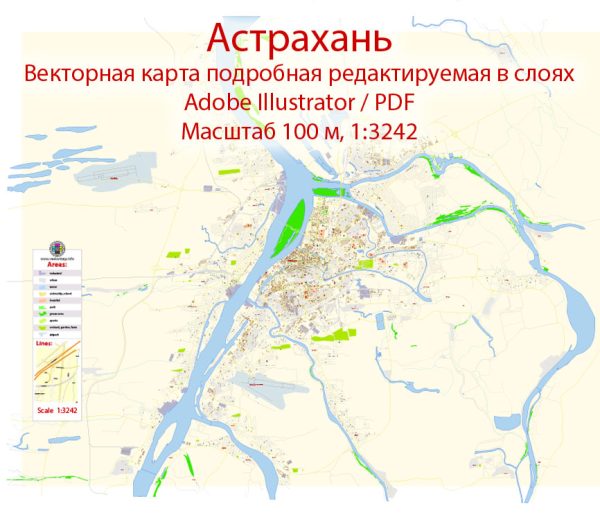Astrakhan, a city located in southern Russia, has a rich and varied history of urban development that spans several centuries. Here’s a brief overview of its history:
- Ancient Astrakhan: The earliest recorded history of the region dates back to the 13th century when it was part of the Golden Horde. The city of Astrakhan itself was founded in 1558 by Ivan the Terrible, as a fortress to protect Russia’s southern borders and control the trade routes along the Volga River.
- Growth as a Trading Center: During the 16th and 17th centuries, Astrakhan grew as a significant trading center, connecting Russia to the Silk Road and facilitating the exchange of goods between Europe and Asia. The city’s strategic location on the Volga River made it a crucial hub for commerce.
- Cultural and Ethnic Diversity: Astrakhan became a melting pot of various cultures and ethnicities, including Russians, Tatars, Armenians, Persians, and many others. This diversity left an indelible mark on the city’s architecture and culture.
- Decline and Destruction: The city suffered a decline in the late 17th and 18th centuries due to various factors, including wars and changes in trade routes. In the early 18th century, it was destroyed by a massive fire, further exacerbating its problems.
- Imperial and Soviet Eras: Astrakhan was incorporated into the Russian Empire in the 18th century and later became part of the Soviet Union. During these periods, efforts were made to rebuild and modernize the city. However, it remained a relatively remote and underdeveloped area.
- World War II: Astrakhan played a significant role during World War II as a key military and logistical center for the Soviet Union, due to its proximity to the Caspian Sea. The city’s infrastructure expanded during this time.
- Modern Development: In the post-Soviet era, Astrakhan has continued to grow and modernize. The city has seen significant investment in infrastructure, transportation, and urban development. Its historical sites have been preserved and restored, contributing to the city’s cultural identity.
- Contemporary Astrakhan: Today, Astrakhan is a regional center and a vital hub for trade, particularly in the energy sector due to its proximity to the Caspian Sea and abundant natural resources. The city has a mix of architectural styles, from historic buildings to modern structures, and it continues to evolve as an important urban center in southern Russia.
Astrakhan’s history reflects the broader historical and cultural tapestry of the region and showcases its resilience and adaptability in the face of challenges and changes over the centuries.


 Author: Kirill Shrayber, Ph.D.
Author: Kirill Shrayber, Ph.D.